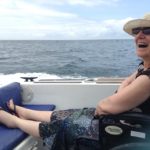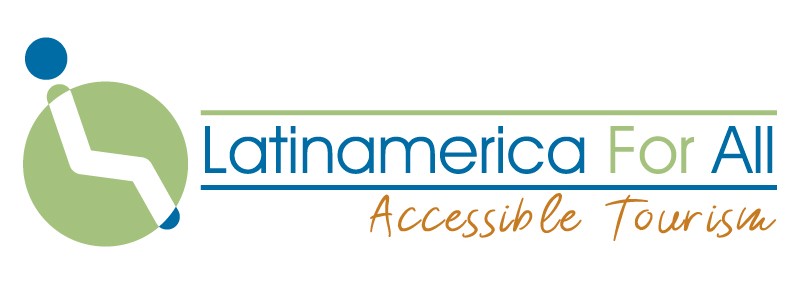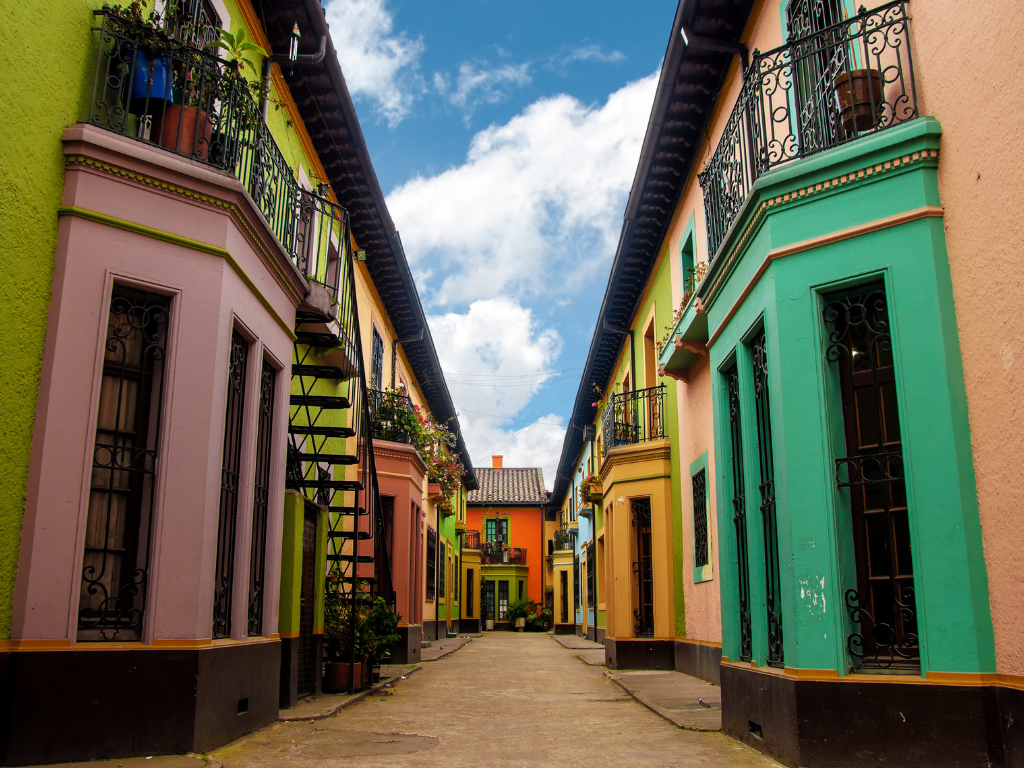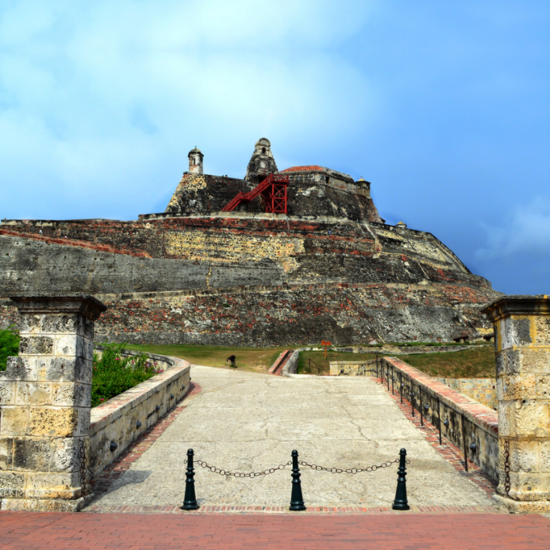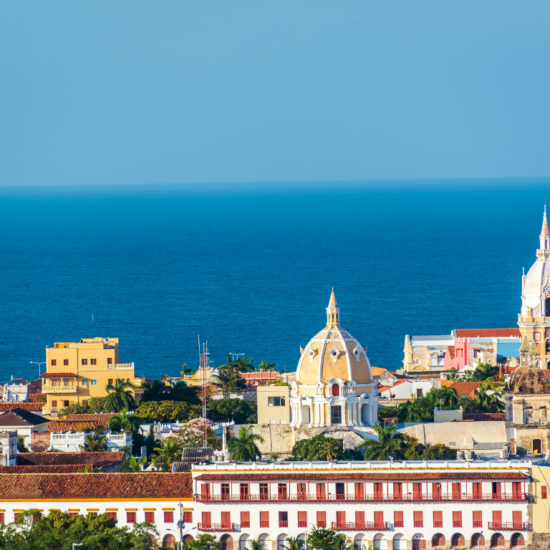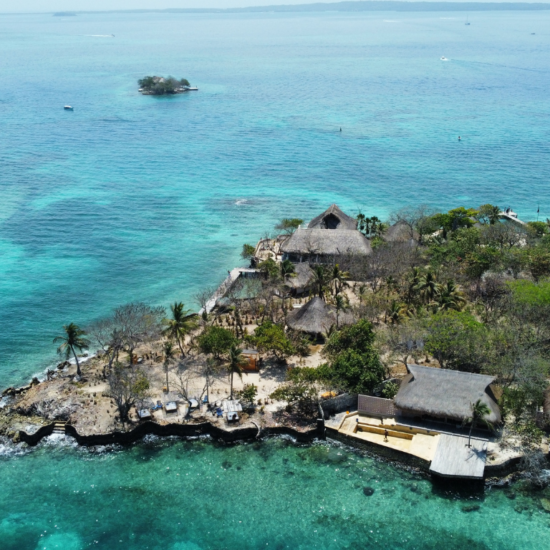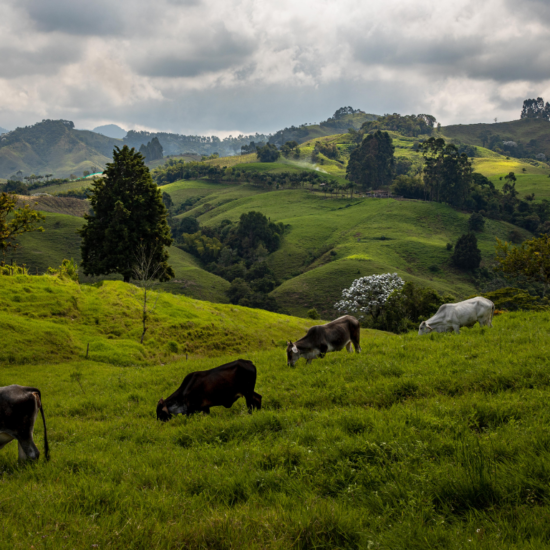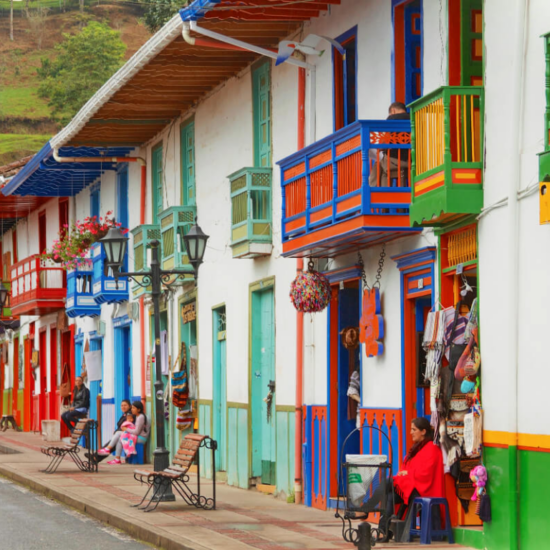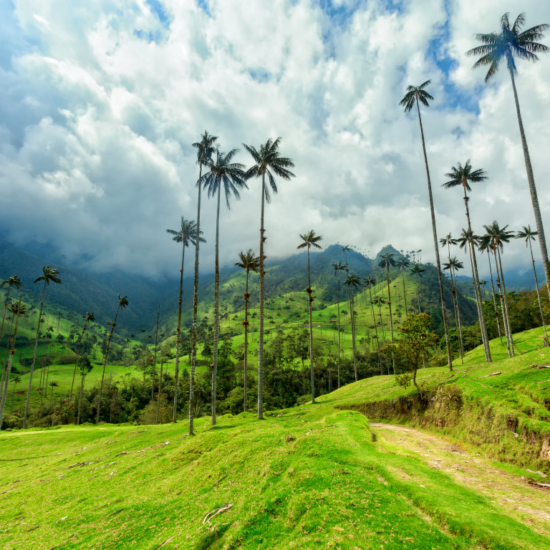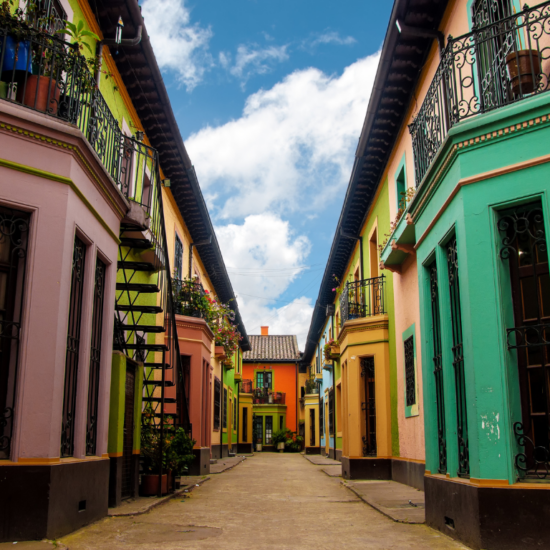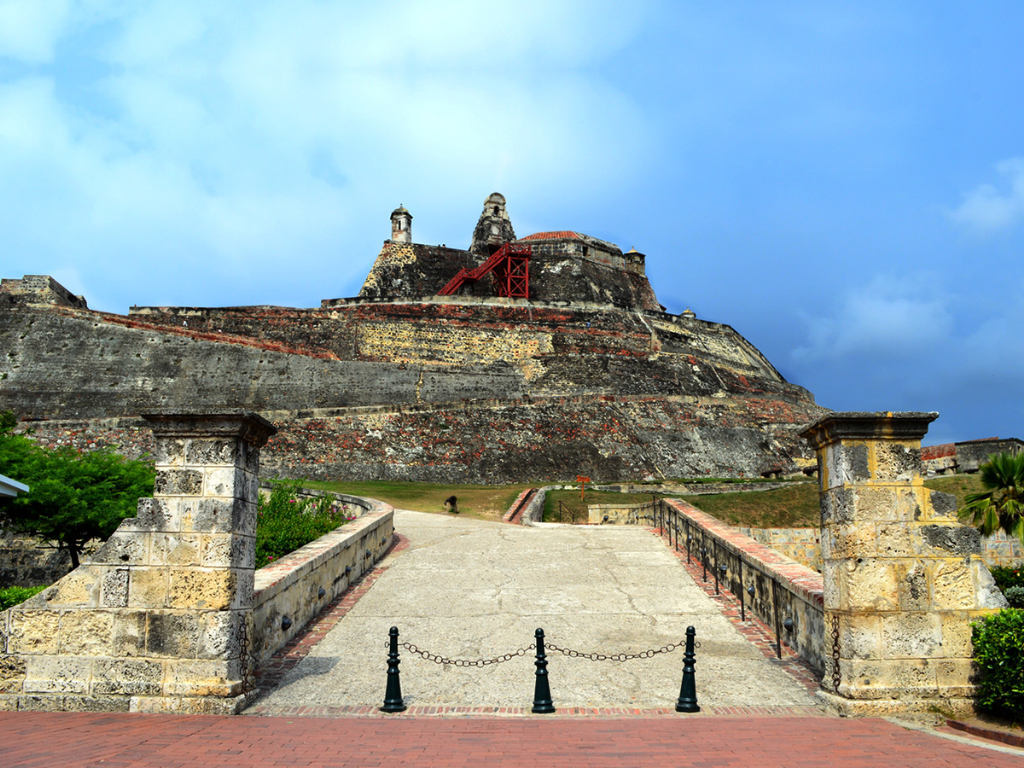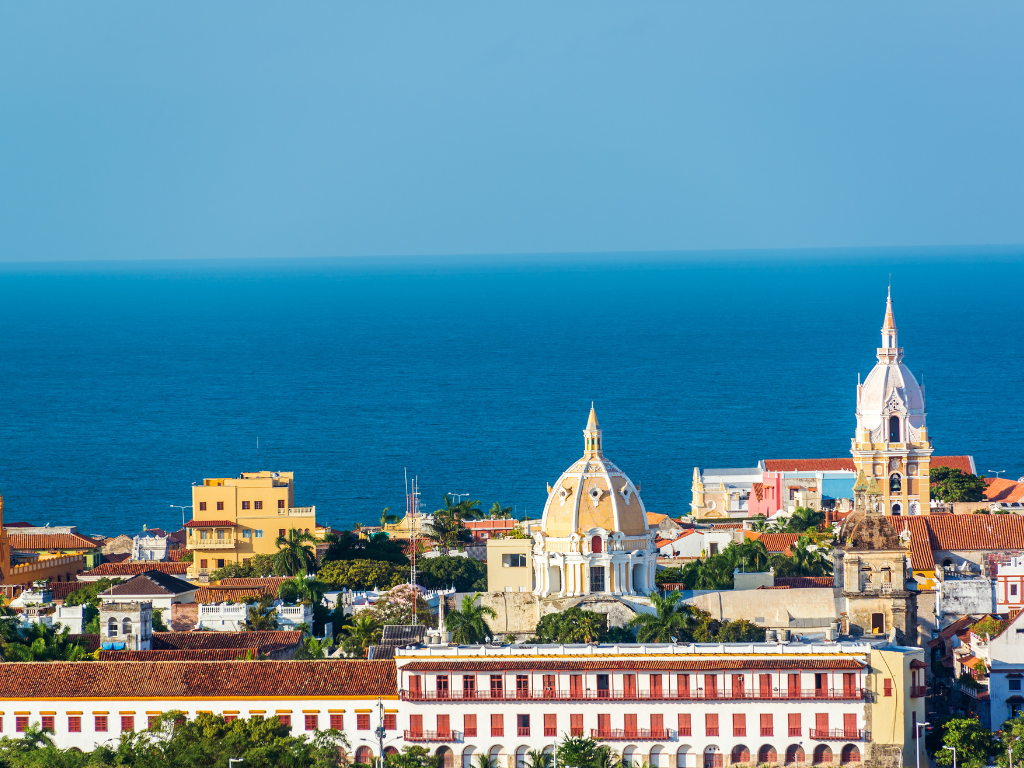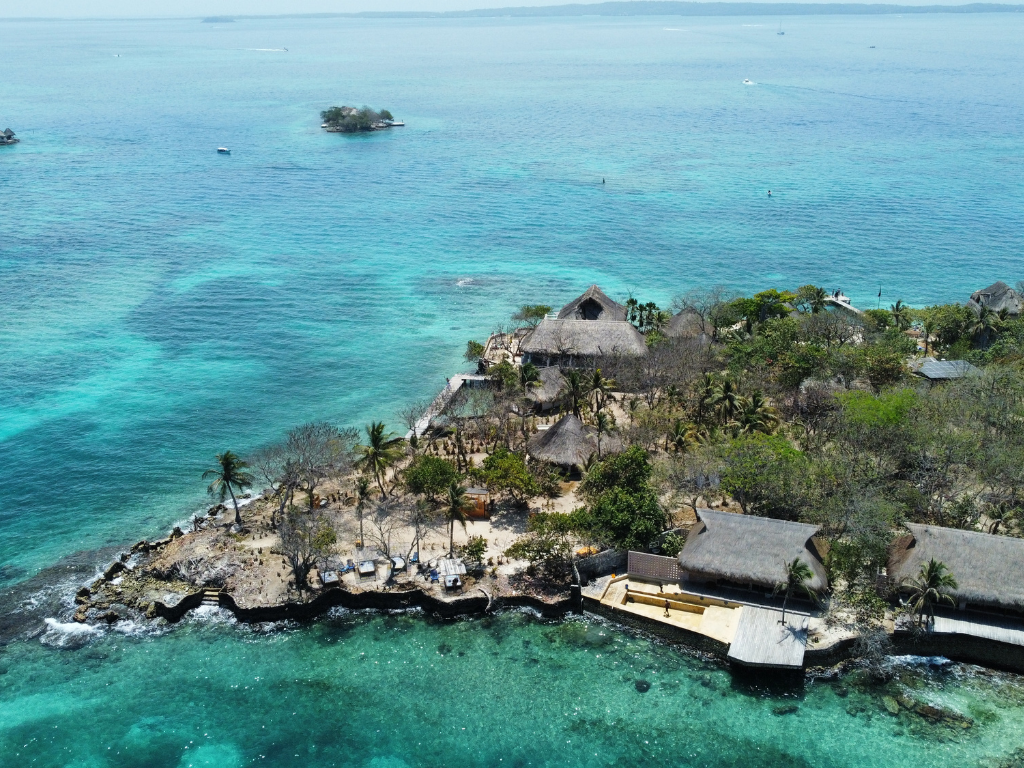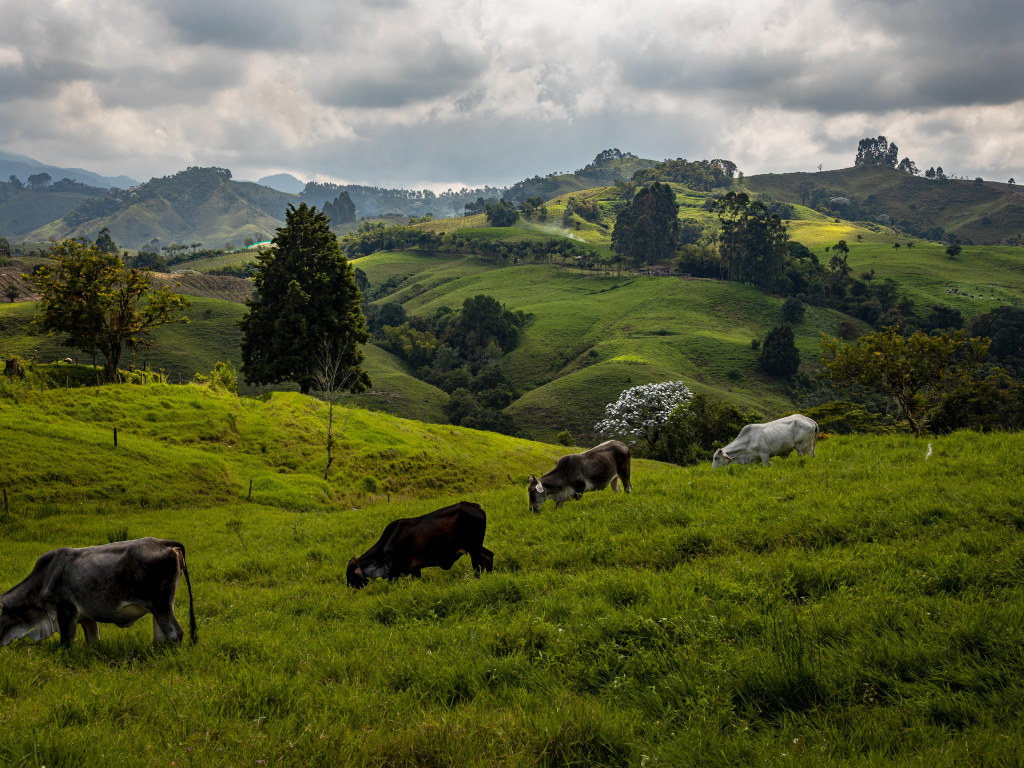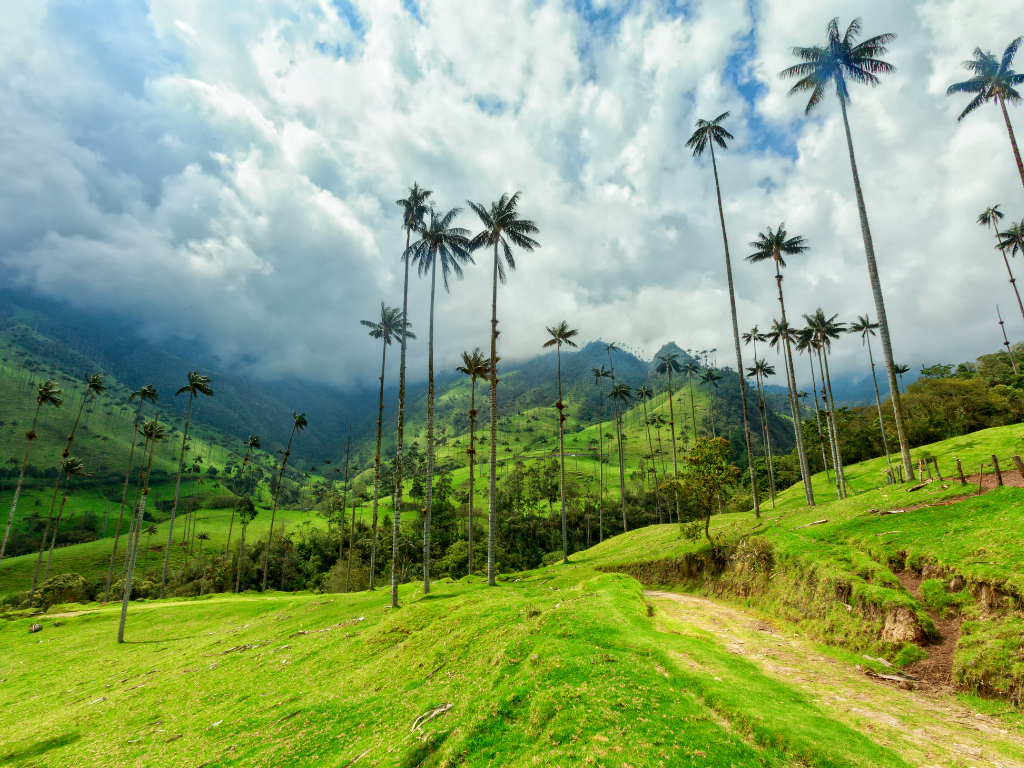Colombia Slow Mobility Tour
Bogota, Coffee Region, Antioquia, Caribean Coast
Incredible diversity of experiences and landscapes waiting to be uncovered in this amazing and friendly destination.
Locals can’t wait to show off the towering Andean peaks and jungle-clad lowlands or tell you about the best places to dip a toe in the Caribbean or Pacific. They will point out the cultural riches of the colourful colonial architecture and myriad celebrations that punctuate the Colombian calendar, all with a tangible pride. Colombia’s time has come, and it was certainly worth the wait
Tours are done in small group basis, focusing on safety protocols and authenticy
Highlights
- Experience Bogota (capital city) with its diversity and multicultural environment, including a blend of modern and colonial architecture.
- Coffee Region, also known as the “coffee triangle,” is located in the central-western part of the country and is made up of the departments of Caldas, Quindío, and Risaralda. Experience day to day atmosphere at this magical towns/farms In addition to coffee, the region is known for its stunning natural beauty, including the Cocora Valley, which is home to the world’s tallest palm trees. The region also has a rich cultural history and is home to many charming towns and villages with colonial architecture and traditional crafts.
- Medellin “City of Eternal Spring” is one of the most innovative metropolises worldwide. Every year in August, the city blooms in all its splendor during the Flower Fair, an important cultural celebration that brings together Antioqueños as well as thousands of visitors in search of flowers, music, and fun.
- Cartagena de Indias, is a land of tropical paradise, rich culture, and stunning landscapes. It is a region that inspires wanderlust, with its pristine beaches, turquoise waters, and lush flora and fauna. A visit to this region promises an extraordinary experience that fuses history, culture, and natural beauty
-
Destination
-
Dress Code
Casual, comfortable athletic clothing, hat and light jacket. -
Included
Activities and toursCertified bilingual guideFriendly accessible accomodationLocal flight Bogota - Pereira and Medellin - CartagenaMeals mentioned in programPrivate transportation -
Not Included
Alcohol drinksGalapagos inter-islands flightsInternational and national flightsLocal flights to and from GalapagosMeals NOT mentioned in the programTipsTravel or medical insurance
1
Day 1: Arrive to Colombia
Welcome Bogota!
Welcome reception at the airport and transfer to the hotel (approx. 40 to 60 minutes, depending on traffic).
On the way to the hotel, your english-speaking guide, will give you all the tips and recommendations you need to get the most of your stay in Colombia.
2
Day 2: Bogota city tour
Tour of La Concordia Market, Monserrate, Candelaria, Plaza de Bolivar, Museo de Botero and Museo del Oro:
Dive into the heart of Bogotá with a tour that awakens all your senses. Walk through the cobbled streets of La Candelaria, the city's most historic neighborhood, where every corner tells stories of centuries past. The colonial facades and vibrant colors transport you back in time as you discover corners full of art and culture.
The first stop is the Plaza de Mercado Concordia, a local treasure where authenticity reigns. Here, among the aromas of fresh herbs and the colors of fruits and vegetables, you will meet the merchants who keep Bogotá's traditions alive.
Then, we climb the iconic Chorro de Quevedo and visit Casa Galería, a colonial gem where stories come alive. This intimate and warm space welcomes you with a tasting of exotic Colombian fruits that can only be found in this country privileged by nature. Colombia is home to over 400 varieties of fruits, a paradise of flavors ranging from the sweetness of lulo to the tangy touch of guanábana, as well as curiosities like borojo and uchuva; to complement this activity, let yourself be enveloped by the chords of live traditional music; songs that have been part of generations of Colombians accompany you as you enjoy this cultural and gastronomic feast. Be part of this adventure that awakens the soul and captivates the heart!
Next, ascend to the Sanctuary of Saint Christ Fallen atop Monserrate mountain, a towering peak offering breathtaking views of Bogotá. Choose your preferred mode of ascent: hike along the scenic path, ride the funicular for a unique experience, or take the cable car for a swift journey to the top. At the summit, explore the sanctuary and marvel at the panoramic vistas of the sprawling city below. On a clear day, you can see the entire Bogotá savanna stretching out before you, a truly unforgettable sight.
Afterwards, explore the cobbled streets of La Candelaria, Bogotá's historic center. This charming neighborhood is a treasure trove of colonial architecture, vibrant street art, and cultural landmarks. Discover trendy cafes and bars tucked away in multi-colored colonial buildings, where you can savor Colombian coffee or sip on a refreshing cocktail. Immerse yourself in the lively atmosphere, with street musicians filling the air with melodies and locals going about their daily lives.
Don't miss the central Plaza de Bolivar, the heart of La Candelaria and a hub of activity. The square is surrounded by impressive buildings, including the city hall, houses of congress, supreme court, and the majestic Catedral Primada. Take a moment to appreciate the grandeur of these architectural gems and learn about their historical significance. The Plaza de Bolivar is also a popular gathering spot for locals and tourists alike, so take some time to people-watch and soak up the vibrant atmosphere.
Explore the Museo Botero, a world-renowned museum housing one of Latin America's most important international art collections. The museum showcases the works of Fernando Botero, a celebrated Colombian artist known for his distinctive style of voluminous figures. Admire his paintings and sculptures, as well as works by other renowned artists from around the world. The Museo Botero offers a unique opportunity to delve into the world of art and appreciate the creative expressions of diverse cultures. (Note: The museum is usually closed on Tuesdays).
Continue your exploration of La Candelaria at the Museo del Oro, a fascinating museum dedicated to pre-Hispanic gold artifacts. Marvel at the largest collection of gold in the world, showcasing over 55,000 pieces from various indigenous cultures in Colombia. The intricate craftsmanship and cultural significance of these artifacts will transport you back in time and provide insights into the rich history of this region.
Includes breakfast
3
Day 3: Flight Bogota - Pereira
Transfer out from hotel to Bogota airport. Only driver.
Duration 01:00hrs.
Flight from Bogotá to the Coffee Region.
Duration 01:00hrs.
Transfer in from PEI airport to hotels in Risaralda. Only driver.
Duration 00:30hrs Meals included: Breakfast4
Day 4: Coffe time
Town Hopping in the Quindío Region
Embark on an unforgettable adventure through the towns of the Coffee Region aboard a classic Willys Jeep. Explore colonial roads with breathtaking landscapes and visit charming colonial towns:
-
Guadua and Bamboo Center: Admire the ingenious constructions made with guadua, an ancestral material.
-
Río Verde: Get lost in its cobblestone streets and discover the beauty of its colonial architecture.
-
Córdoba: Wander through its colorful houses and squares filled with coffee tradition.
-
Pijao: Learn about sustainability projects and delight yourself with the local cuisine.
-
Buenavista: Contemplate stunning panoramic views of the coffee landscape from its viewpoints.
Taste the best coffee!
During the tour, we will make a stop for you to enjoy a delicious freshly brewed coffee, an experience that will awaken your senses!
Meals included breakfast and lunch
5
Day 5: Salento - Pereira
Explore Cocora Valley and Salento: an adventure among wax palms and coffee culture
Private transfer to Salento where we hop on an immaculate old Willy´s jeep and wind our way through super-scenic Valle del Cocora, a valley that is famous for its supply of the national tree, the wax palm. We then have the opportunity to take in some mountain air and stroll up the foot hills of the Andes before we head back to Salento.
Set against beautiful green mountains, the small coffee town of Salento is soaked in traditional charm. Colourful homes with shaded patios line its quaint streets, and cafes serving locally produced arabica open onto its small squares. The saloons are full of locals in straw trilbies and ponchos drinking 'aguardiente', the town's tipple of choice, a kind of sugar cane brandy.
Walk down Calle Real and look into its many 'artesanias' (local craft stools), as well as its restaurants. For lunch, why not try the traditional grilled trout that is fished here, served on a very thin plantain crisp. At the end of the Calle Real is a staircase that takes you up to Alto de la Cruz, a hill topped with a cross. Here you can enjoy fantastic views of the Valle de Cocora and its surrounding cordillera of Andean mountains. If there is a clear sky, you might spot the snow-capped volcanoes teetering behind on the horizon.
Meals included breakfast
6
Day 6: Drive Coffee Region to Medellin
Transfer from Coffee Region to Medellin (259Km, approximately 6 hours); there will be a stop in the town of Jardin (Antioquia).
Observations: Please note that the transfer from the Coffee Region to Jardín will be with only driver; once in the town, the driver will meet with the guide, who will accompany you during the stop in the town. Upon completion of the activity, you will depart for the city of Medellín with the guide.
Meals included breakfast
7
Day 7: Medellin city tour
Medellin history of transformation tour:
About 30 years ago, Medellín was one of the most dangerous cities in the world. Back in the early 90s, when the hunt for Pablo Escobar took place, the head of Medellín's drug cartel was at its peak. Thus the reign of “El Patrón” came to its end. Until the turn of the millennium the struggle about Escobar's successor continued, but since 2002 Medellín began to change. Local politicians started to invest heavily in infrastructure and public education. Today the “City of Eternal Spring” is one of the most innovative metropolises in the world.
Join us on an exciting tour through the history and present of Medellín and learn more about the transformation of this fascinating metropolis. You'll visit one of the most representative spots of the city, Comuna 13. What was once a symbol of violence and social conflict has been transformed into a vibrant cultural hub. As you wander through the colorful streets, you'll be amazed by the stunning murals and graffiti that adorn the buildings. Take a ride on the escalators that wind their way up the steep hills, offering breathtaking views of the city. Learn about the community's remarkable journey from adversity to hope, and experience the warmth and hospitality of its people.
Meals included breakfast
8
Day 8: Medellin area
Guatapé and El Peñol:
Today you will have the opportunity to explore the rural surroundings of Medellín and marvel at the beauty of Guatapé and its imposing El Peñol. Enjoy incredible views of the rolling hills and surrounding vegetation on your way to El Peñol Boulder, one of the most spectacular destinations around Medellín.
This 200-meter-high monolith can be admired from its base, contemplating the incredible landscapes that surround it.
Our tour will allow you to enjoy the majesty of the rock monolith and its surroundings.
- Panoramic view of El Peñol: We will stop at a strategic point so you can contemplate the grandeur of the rock monolith and capture stunning photographs.
- Tour of Guatapé: Immerse yourself in the charm of Guatapé with an accessible walk through its colorful streets, full of history and tradition reflected in its zócalos (decorative skirting boards). Admire the beautiful and colorful paintings that decorate the houses and visit the famous village church.
Meals included breakfast
9
Day 9: Flight Medellin - Cartagena
Flight from Medellín to Cartagena. Note: The duration of the flight from the Medellin to Cartagena may vary depending on whether the flight is direct or includes stopovers. Please check the flight details for the specific duration of your chosen itinerary. All flights are subject to availability.
Duration 01:00hrs.
Transfer in from Cartagena airport. Only driver.
Meals included breakfast
10
Day 10: Cartagena City Tour
Cartagena highlights tour:
Visit Cartagena, Colombia’s walled city. Within its fortifications you will find a unique culture and history that seem to blend reality and fantasy. Stroll the cobblestone streets and admire the colonial buildings. Visit the city’s plazas, galleries, churches and vaulted walkways where crafts and antiquities are sold.
Later you will visit the San Felipe Castle, a UNESCO World Heritage Site and the greatest fortification ever built by the Spanish in any of their colonies. The original, smaller structure was built in 1657, and was greatly extended in 1762 into the sprawling behemoth you see today, almost entirely covering the 40 metre high San Lazaro hill it is situated on. Numerous attempts to take the fort have been made over the centuries, but it has remained entirely impregnable. One of the Royal Navy's most humiliating defeats occurred here when Admiral Edward Vernon failed to take the castle from its 3000 strong garrison with his force of 23,000 men and 186 ships. Climb along its defences and explore its many batteries, parapets and cannons. Once you reach the top, enjoy the vast views across the city and coastline, and imagine the importance of this strategic position in times of siege. Finally, there is a dense system of tunnels below the fort, connecting key parts for distributing provisions during siege. They are designed to allow sound to reverberate all along its length, meaning the slightest footfall of an approaching enemy could be heard, as well as allowing for easy internal communication. Some of these tunnels are lit and open to visitors, and make for an eerie, atmospheric walk. Make sure to venture through these before you leave.
Later ascend the Cerro de la Popa to have a look around the lovely stone convent at its peak, as well as the stunning views of the city from this 150 metre-high vantage point. Literally meaning 'hill of the stern', according to its apparent similarity to the rear of a ship, the convent at the top was first founded by the Augustine fathers in 1607. The convent was originally wooden, and was replaced by the current stone edifice two centuries later when the surrounding hill was fortified. Look around the convent's chapel and flower-filled cloister, and study the ornate image of La Virgen de la Candelaria inside. Look out too for the eerie statue of a speared Padre Alonso Garcia de Paredas, a priest who was murdered along with five soldiers for preaching the word of God.
Meals included breakfast
11
Day 11: Cartagena
Free day on your own
Meals included Breakfast
12

